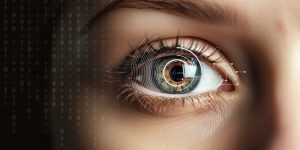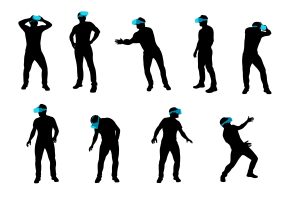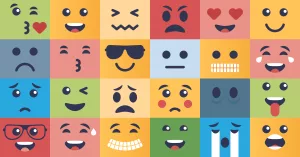Valentine’s day is upon us and once again love, and falling in love, is the central concern of most media outlets. But the first step to love, at least in our modern society, is attraction.
In this blog post, we investigate the science of attraction from a biometrics point of view. Our major question is how do our bodies and brains react when we meet someone we are attracted to and what drives our motivation to continue (or initiate) dating them?
Attraction comes in many flavors, but here we focus on romantic attraction, that is, an attraction to a person you think you could fall in love with. An initial romantic attraction is critical because it fuels our motivation to initiate a conversation (do you swipe left or right?) and even a possible relationship (do you ask them to go on that third, fourth, and fifth date?).
While we cannot help you with finding the love of your life, we can at least entertain you with the science of attraction and what makes up the first steps of falling in love.
Let’s go.
Attraction changes our brain, body, and behavior
Imagine this: You are standing in a party crowd (pre-COVID 19) chatting with some good friends when an attractive stranger joins the group. Before the stranger has even introduced themselves, you have encoded the attractiveness and trustworthiness of their face. In fact, data from studies using EEG recordings have found that our perception and judgment of a person’s attractiveness occurs in less than 200 milliseconds (Ohman et al., 2016) and a 3 Hz signal is generated in a part of your brain called the occipital lobe every time your turn your gaze from one of your (less attractive) friends to the stranger’s attractive face (Luo et al., 2019). Together, these EEG signals drive your subconscious judgment of the stranger’s attractiveness.
Around ten seconds later your arousal levels have increased significantly. Within a few minutes, you may feel your palms get a little sweaty. The “sweaty palms” is not just a saying, your palms contain tiny glands that produce small amounts of sweat when you are aroused. The more aroused you are, the more sweat your glands produce. This phenomenon is also referred to as the Galvanic Skin Response or Electrodermal Activity. Researchers have found that in the presence of an attractive person, we generate increasingly higher levels of sweat (Hughes et al. 2010) – an indication that our arousal is rising.

This becomes a bit of a vicious cycle, because you may find yourself unknowingly spending more time looking at the attractive person’s face. Research has found that we unconsciously spend more time looking at attractive people’s faces compared to less attractive ones (Valuch et al., 2015). You may find it compelling to continue looking at the stranger’s face, even when you know you shouldn’t. In fact, you may feel almost unable to stop. Indeed, researchers are reporting similarities between the early stages of being in love and drug addiction (Zou et al., 2016).
At this point, you might want to enter the conversation to catch the eye of the stranger. As you start speaking your friends will likely notice that you sound different: your vocal tone is lower, and if they had to rate you, they would probably say that you sound more pleasant than prior to the attractive person’s arrival (Hughes et al., 2010).
As you continue thinking about how nice the stranger looks, your brain is likely generating a type of activity pattern that reflects a state of focused attention. Researchers have found that romantic and sexual attraction generates a type of brain activity called alpha power, specifically on the left side of the brain (Aghedu et al., 2021; Schone et al., 2016). When a person is thinking about someone, they are romantically involved with it triggers alpha power activity in an area of the brain called the parieto-occipital lobe (Aghedu et al., 2021), whereas seeing pictures that generate sexual attraction trigger alpha power activity in the frontal lobe (Schone et al., 2016). Alpha-power in the left parieto-occipital lobe reflects a state of relaxation and focused attention, while alpha power in the left frontal lobe reflects a motivation to approach. The frontal lobe activity is particularly interesting since it has been associated with people’s emotional state as well as driving people’s behavior: stronger frontal alpha-power means more positive feelings and higher likelihood of seeking out the “stimuli” (in this case, your attractive stranger).
To summarize, finding another person attractive shifts your attention to their face, makes your palm sweat, your vocal tone decrease, and increases the alpha power in your left frontal and parietal-occipital lobe. Where do you go from here? With a bit of luck, the stranger has been undergoing the same psychophysical effects as yourself. We hope that your left frontal alpha power will be strong enough to motivate both of you to go out on that first (and second, third, fourth…) date.
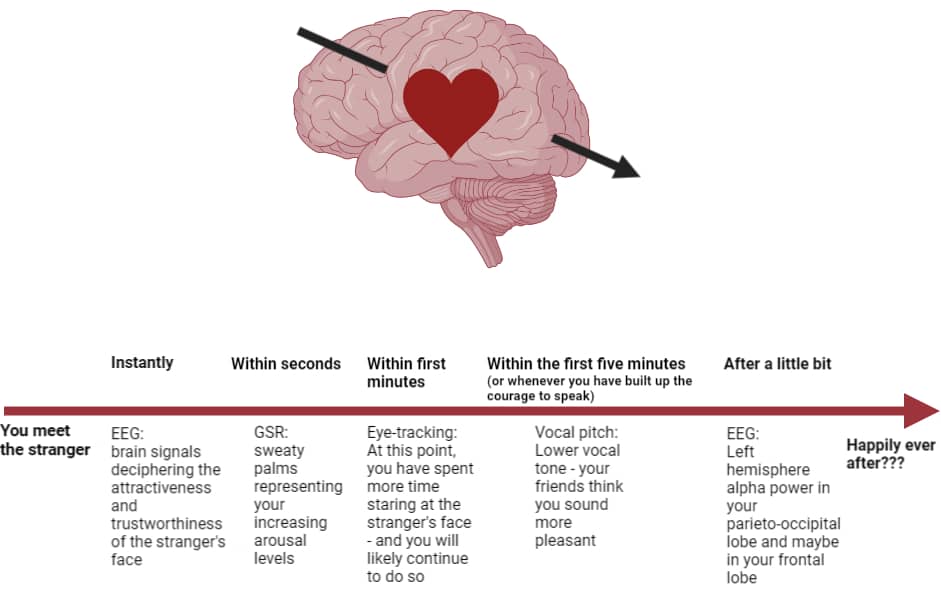
Studying attraction in iMotions
As the scientists that we are, we naturally wanted to conduct our own study to test the biometrics of attraction. Have you heard of the “36 questions to fall in love with anyone”? While these questions are lauded for their love-generating ability, it is unclear how much the love-magic relies on physical attraction or the actual questions. To parse out this critically important research question, we created a modified version of the “36 questions to fall in love with anyone”, while measuring the subjects’ galvanic skin response, eye tracking, and facial expressions.
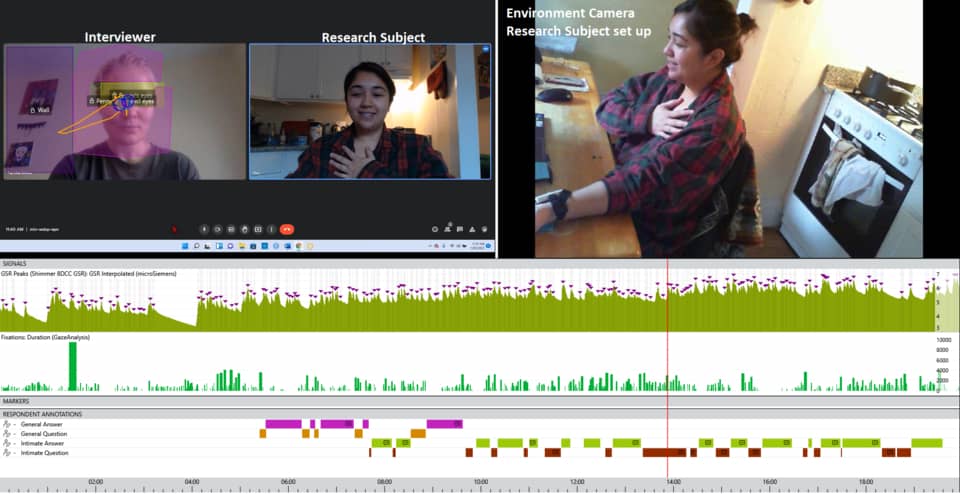
To capture the facial expressions of both the subject and the interviewer, we used the ”Face Recording” stimulus in iMotions, enabling the interviewer to ask them the modified “love-inducing” questions over a virtual meeting platform after the subjects’ filled out a survey rating how attracted they were to their interviewer. Indeed, the more attracted the subject was to their interviewer, the more likely they were to generate a high amplitude and frequent arousal response while also constantly revisiting the interviewer’s face and, in particular, their eyes.
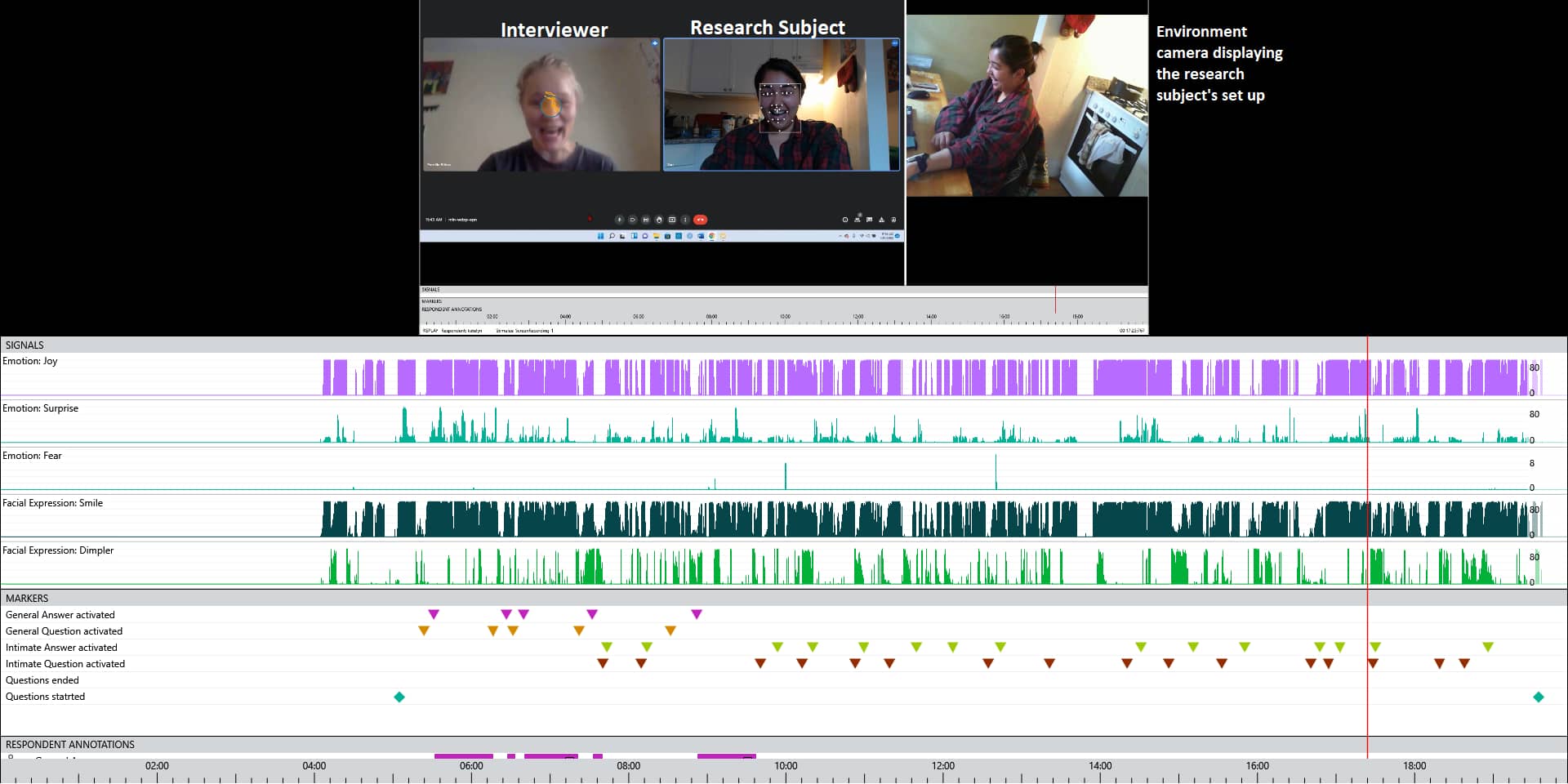
Finding the interviewer “not attractive at all” left the subject with a much lower arousal response and dramatically less revisiting of the interviewer’s face and eyes. In fact, it almost seemed like the respondents who found their interviewer attractive were unable to take their eyes off them. Despite the lack of attention to the interviewer’s eyes and face, the “not at all attracted” subjects thankfully spent as much time smiling and in general expressing joyful facial expressions as the “very attracted” group.
In summary, finding another person attractive has substantial effects on our brains, bodies, and behaviors that are sometimes unconscious to us. We wish you the best of luck on your journey of attraction and everything that comes with it.
Free 52-page Human Behavior Guide
For Beginners and Intermediates
- Get accessible and comprehensive walkthrough
- Valuable human behavior research insight
- Learn how to take your research to the next level

Psychology Research with iMotions
The world’s leading human behavior software





